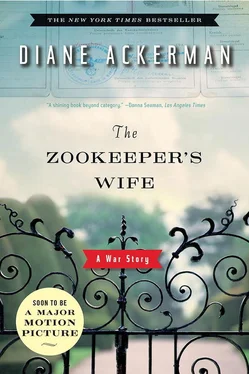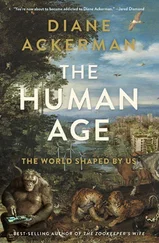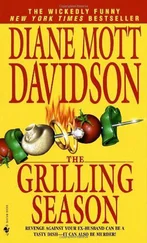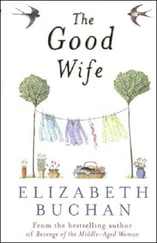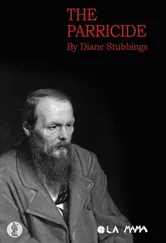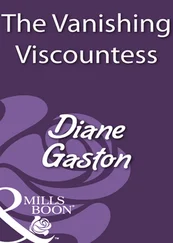“Antonina was a housewife,” he told Danka Narnish, of another Israeli paper, “she wasn’t involved in politics or war, and was timid, and yet despite that she played a major role in saving others and never once complained about the danger.”
“Her confidence could disarm even the most hostile,” he told an anonymous reporter, adding that her strength stemmed from her love of animals. “It wasn’t just that she identified with them,” he explained, “but from time to time she seemed to shed her own human traits and become a panther or a hyena. Then, able to adopt their fighting instinct, she arose as a fearless defender of her kind.”
To reporter Yaron Becker, he explained: “She had a very traditional Catholic upbringing and that didn’t deter her. On the contrary it strengthened her determination to be true to herself, to follow her heart, even though it meant enduring a lot of self-sacrifice.”
Intrigued by the personality of rescuers, Malka Drucker and Gay Block interviewed over a hundred, and found they shared certain key personality traits. Rescuers tended to be decisive, fast-thinking, risk-taking, independent, adventurous, openhearted, rebellious, and unusually flexible—able to switch plans, abandon habits, or change ingrained routines at a moment’s notice. They tended to be nonconformists, and though many rescuers held solemn principles worth dying for, they didn’t regard themselves as heroic. Typically, one would say, as Jan did: “I only did my duty—if you can save somebody’s life, it’s your duty to try.” Or: “We did it because it was the right thing to do.” [95] Rostal, “In the Cage of the Pheasant.”
I.
BIAŁOWIEŻA, 2005
AT THE EDGE OF A PRIMEVAL FOREST IN NORTHEASTERN Poland, time seems to evaporate, as two dozen horses graze on the marsh grass beneath colossal pine trees and a dazzling blue sky. On frosty mornings they browse inside bubbles of steam and leave a sweet leathery odor behind them when they go. Their body-fog travels with them, but their scent can remain for hours as invisible clouds above jumbled hoofprints, and sometimes, on a gravel path or leaf-strewn trail, where no hoofprints tell, one enters a pocket of gamy air and is suddenly surrounded by essence of wild horse.
Spring through fall, the horses live unaided by humans, wading in the ponds and grazing on bushes, tree branches, algae, and grass. Snow falls in mid-October and remains until May. In winter, they hungrily paw through the snow to find dry grass or rotting apples, and rangers of the mounted Horse Guard sometimes provide hay and salt. Blessed with bolt-and-leap muscle, they have little fat to insulate them on icy days, so they grow shaggy coats that mat easily. It’s then that they most resemble the horses painted on the cave walls at prehistoric sites throughout the Loire Valley.
How startling it is to shed the here and now and watch what might be ancient horses browsing at the forest-edge meadows just as humans did millennia ago. They’re strikingly beautiful creatures: dun with a black stripe down the back and a dark mane (sometimes a foal will be born with black face and fetlocks and a zebra-striped leg or two). Although they have long ears and large thick necks, they’re lightly built and fast. Unlike domestic horses, they turn white in winter, just as ermine and arctic hares do, blending in with the landscape. Then ice clots like marbles in coarse manes and tails, and as they stomp their hooves build up platforms of snow. Still, they thrive on harsh weather and poor diet; and although the stallions battle fiercely, with bared teeth and thwacking necks, they heal fast as a shaman’s spell. “In a world older and more complete than ours they move,” Henry Beston writes of wild animals in The Outermost House, “gifted with extensions of the senses we have lost or never attained, living by voices we shall never hear.”
In Białowieża, one can also find re-created aurochsen, a favorite game animal of Julius Caesar, who described them to friends back in Rome as savage black bulls “a little less than elephants in size,” strong and fast. “They spare neither man nor beast,” he wrote. “They cannot be brought to endure the sight of men, nor be tamed, even when taken young.” Apparently, men of the Black Forest trained rigorously to hunt aurochsen bulls (the cows were left to breed), and those “who have killed a great number—the horns being publicly exhibited in evidence of the fact—obtain great honour. The horns… are much sought after; and after having been edged with silver… are used for drinking vessels at great feasts.” Some of those silver-tipped horns remain in museums. But by 1627, the last true aurochsen had been killed.
Yet here tarpans, bison, and aurochsen apparently graze, roaming the closely guarded nature preserve on the Polish-Belorussian border that’s been a royal favorite since the 1400s, a realm of magic and monsters that inspired many European fairy tales and myths. King Kazimierz IV found it so enchanting that he spent seven years (1485–92) living in a simple forester’s lodge and managing affairs of state from his sylvan home.
What’s so awe-inspiring about this landscape that it could bewitch people from many cultures and eras, including Lutz Heck, Göring, and Hitler? For starters, it contains five-hundred-year-old oak trees, as well as soaring pine, spruce, and elm rising like citadels hundreds of feet tall. It boasts 12,000 species of animal, from one-celled protozoa to such large mammals as boar, lynx, wolf, and moose; and, of course, there are its bands of throwback aurochsen, tarpans, and bison. Beavers, martens, weasels, badgers, and ermine glide through the marshes and ponds, while Pomeranian eagles share the skies with bats, goshawks, tawny owls, and black storks. On any given day, one is likely to encounter more elk than humans. The air smells of balsam and pine needles, sphagnum moss and heather, berries and mushrooms, marshy meadows and peat bogs. Small wonder Poland has chosen the preserve as its only natural national monument, and that it also merits the honor of being a World Heritage Site.
Because the preserve is closed to hunters, loggers, and motorized vehicles of any sort, it’s the last refuge of unique flora and fauna, and for that reason, park rangers guide tiny groups of hikers along designated paths, where they’re forbidden to litter, smoke, or speak above a whisper. Nothing may be removed, not even a leaf or stone as souvenir. All traces of humankind, especially noise, are discouraged, and if a ranger needs to carry something into the park he transports it by rubber-tired horse cart; if he needs to move a fallen tree, he must use a handsaw and a team of workhorses.
In what’s known as the “strict preserve,” one sees many fallen, dead, and decaying trees which, oddly enough, create the backbone and great strength of the forest, which is why activists vigorously defend its dead wood. Wind-thrown trees, fallen naturally and rotting, provide home to a throng of creatures: 3,000 species of fungi, 250 species of mosses, 350 species of lichen, 8,791 species of insects, mammals, and birds. Guides and a museum with dioramas teach the park’s ecology and history, but few visitors realize how richly it appealed both to Nazi racism and romanticism.
As twilight descends on the marshes of Białowieża, hundreds of starlings fly up all at once and create a great funnel, then the flock descends to find shelter for the night among the pond grasses. I’m reminded of Antonina’s love of starlings, and of Magdalena “the Starling,” and of Lutz Heck, too, who fancied “the little iridescent green glossy starling [which] warbled its little song with wide open beak, its small body literally shaking under the force of its notes.” [96] Heck, Animals , p. 61.
The eugenics and breeding experiments that thrived with Heck’s ambitions, Göring’s lust for game, and Nazi philosophy, in the end, ironically, helped to save scores of rare plants and endangered animals.
Читать дальше
